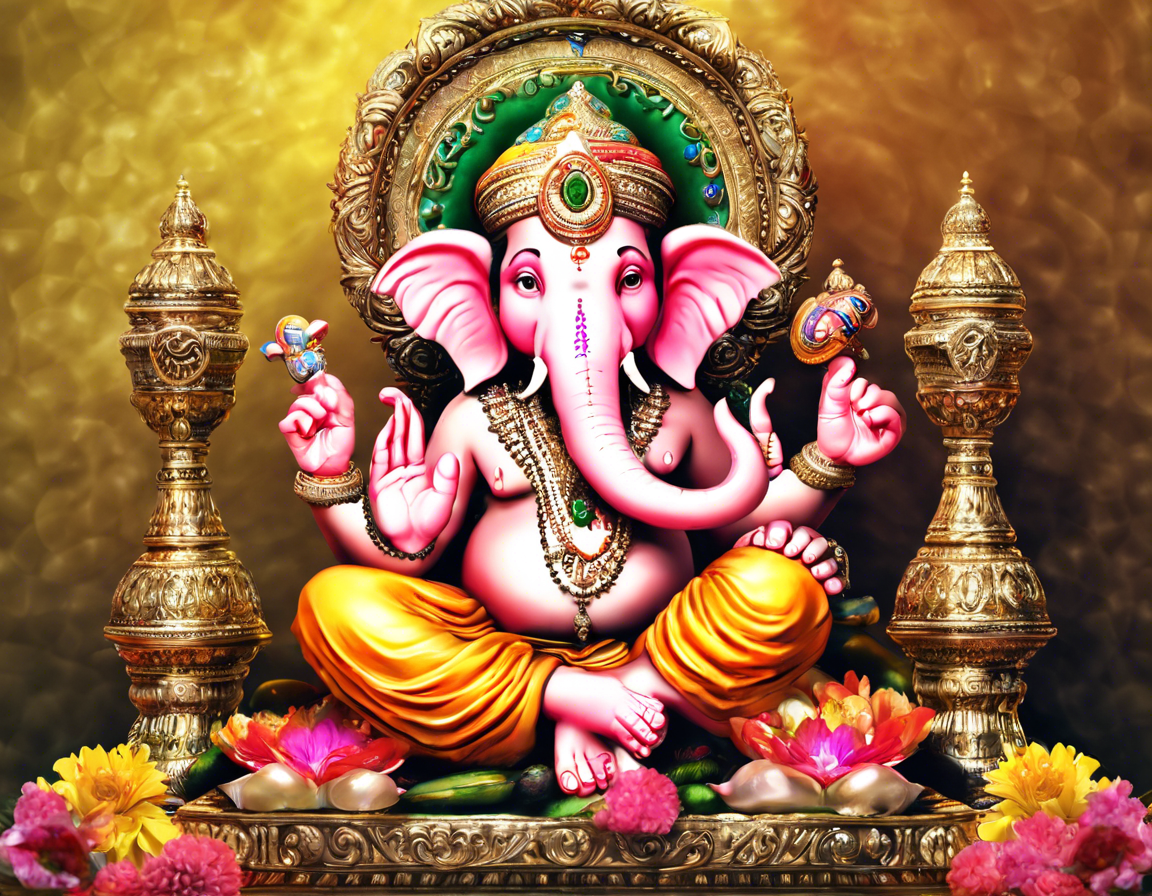Dagdusheth Ganpati: A Symbol of Devotion
Introduction:
Dagdusheth Ganpati, located in Pune, Maharashtra, is one of the most famous and revered temples dedicated to Lord Ganesha in India. The temple holds significant cultural and religious importance and is visited by thousands of devotees every year. Let’s delve into the history, significance, rituals, and cultural impact of Dagdusheth Ganpati.
History of Dagdusheth Ganpati:
Dagdusheth Ganpati was established in the late 19th century by Dagdusheth Halwai, a renowned sweetmeat seller, and his wife, Lakshmibai. The couple lost their son to the plague epidemic, which led them to build the temple in honor of Lord Ganesha. The idol of Lord Ganesha in the temple is adorned with nearly 40 kilograms of gold and is a sight to behold for devotees and visitors alike.
Significance of Dagdusheth Ganpati:
The temple is not just a place of worship but a symbol of faith, hope, and devotion for millions of people. It is believed that Lord Ganesha fulfills the wishes of those who pray with a pure heart at this temple. The atmosphere at Dagdusheth Ganpati is charged with positive energy and spirituality, making it a must-visit for those seeking blessings and solace.
Rituals and Festivals at Dagdusheth Ganpati:
– The temple is known for its elaborate Ganesh Chaturthi celebrations, which attract devotees from far and wide.
– Aarti (prayer rituals) are performed multiple times a day, and devotees can participate in these rituals to seek the blessings of the deity.
– Modak, a sweet delicacy loved by Lord Ganesha, is offered to the idol during prayers.
Cultural Impact of Dagdusheth Ganpati:
The temple has not only religious significance but also cultural importance. It is a symbol of communal harmony and unity, as people from all walks of life and faiths visit the temple to seek blessings. The teachings of Lord Ganesha – wisdom, prosperity, and remover of obstacles – resonate with people of all ages and backgrounds.
Importance of Devotion in Hinduism:
Devotion (bhakti) is a core tenet of Hinduism, emphasizing a deep, personal connection with the divine. Through acts of devotion such as prayer, rituals, and offerings, devotees seek to cultivate a strong bond with the divine and attain spiritual fulfillment. The story of Dagdusheth Halwai’s unwavering devotion to Lord Ganesha serves as an inspiration for generations of devotees to deepen their own spiritual practices.
Visiting Dagdusheth Ganpati:
If you plan to visit Dagdusheth Ganpati, here are a few tips:
– Dress modestly and respectfully, as it is a place of worship.
– Avoid visiting during peak hours to experience a more peaceful darshan.
– Participate in the aarti rituals for a truly enriching experience.
– Respect the customs and traditions followed at the temple.
FAQs (Frequently Asked Questions):
-
Is Dagdusheth Ganpati open to visitors every day?
Yes, the temple is open to visitors every day from early morning to late evening. -
Can non-Hindus visit Dagdusheth Ganpati?
Yes, people of all faiths are welcome to visit the temple and seek the blessings of Lord Ganesha. -
Are there any specific rituals one must follow while visiting the temple?
While there are no strict rituals for visitors, participating in the aarti and offering prayers with a pure heart are recommended. -
Is photography allowed inside the temple premises?
Photography is generally not allowed inside the temple out of respect for the sanctity of the place. -
What is the significance of offering modak to Lord Ganesha?
Modak is considered to be Lord Ganesha’s favorite sweet, symbolizing the sweetness and rewards of devotion.
In conclusion, Dagdusheth Ganpati stands as a beacon of devotion and faith, inspiring millions to deepen their spiritual practices and seek the blessings of Lord Ganesha. The temple’s rich history, significance, and cultural impact continue to draw devotees from all corners of the world, making it a cherished landmark in the spiritual landscape of India.

Recent Comments